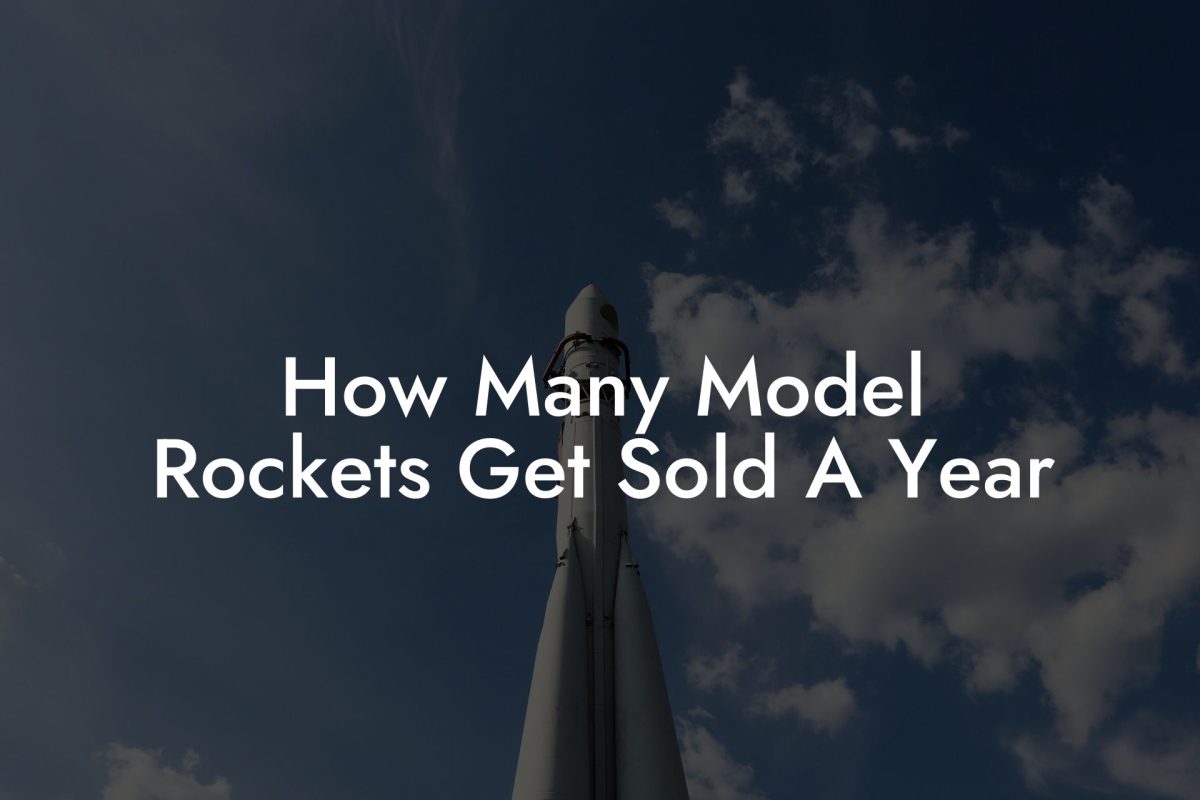Imagine soaring to new heights and defying gravity with a machine that's both a marvel of engineering and a testament to human ingenuity – welcome to the world of model rockets! Whether you're a seasoned enthusiast or just starting out, this comprehensive guide will propel you into the exciting realm of model rocketry, covering everything from the basics to advanced techniques and inspiring stories of innovation.
Quick Links to Useful Sections
What Are Model Rockets?
Model rockets are scaled-down versions of real rockets, designed to mimic the look, feel, and functionality of their full-scale counterparts. These miniature marvels can reach incredible speeds, altitudes, and distances, providing an exhilarating experience for enthusiasts of all ages.
From simple, entry-level models to complex, high-performance rockets, the world of model rocketry offers something for everyone. Whether you're interested in building, flying, or simply learning about these incredible machines, this guide will serve as your launchpad to adventure.
The History of Model Rockets
The concept of model rockets dates back to the early 20th century, when pioneers like Robert Goddard and Hermann Oberth experimented with small-scale rockets. However, it wasn't until the 1950s and 1960s that model rocketry began to gain popularity as a hobby.
The development of modern model rockets was largely driven by the space race and the advent of commercial rocketry. Today, model rockets have become an integral part of STEM education, inspiring a new generation of engineers, scientists, and innovators.
Looking For The Best Model Rocket Kits? You'll Love These:
Types of Model Rockets
Model rockets come in a staggering array of shapes, sizes, and configurations. Here are some of the most popular types:
- Beginner Rockets: Simple, easy-to-assemble models perfect for newcomers to the hobby.
- Scale Models: Accurate replicas of real rockets, often featuring intricate details and realistic designs.
- High-Power Rockets: Advanced models capable of reaching extreme altitudes and speeds.
- Competition Rockets: Custom-built models designed for competitive flying and precision performance.
- Experimental Rockets: Innovative designs pushing the boundaries of model rocketry, often featuring cutting-edge materials and technologies.
Building and Customizing Model Rockets
One of the most rewarding aspects of model rocketry is building and customizing your own rockets. From selecting materials to designing unique features, the possibilities are endless.
Whether you're a seasoned craftsman or a beginner, building a model rocket requires patience, attention to detail, and a willingness to learn. With the right guidance and resources, you can create a truly one-of-a-kind machine that reflects your personality and creativity.
Flying and Launching Model Rockets
The thrill of launching a model rocket is unmatched – the rush of adrenaline, the roar of the engine, and the spectacle of your creation soaring into the sky.
To ensure a safe and successful flight, it's essential to follow proper launch procedures, choose the right launch site, and be mindful of local regulations and weather conditions.
Model Rocketry Communities and Resources
The model rocketry community is vibrant and active, with numerous clubs, forums, and online resources available to enthusiasts.
From local meetups and competitions to online tutorials and forums, there's never been a better time to connect with like-minded individuals and learn from the experts.
Model Rocketry FAQs: Your Questions Answered
Here are some frequently asked questions about model rockets, covering topics from safety and regulations to building and flying:
1. Are model rockets safe?
Yes, model rockets are designed to be safe when used properly and in accordance with safety guidelines.
2. What are the basic components of a model rocket?
The main components of a model rocket include the body tube, fins, nose cone, recovery system, and engine.
3. How high can model rockets fly?
Depending on the type and design, model rockets can reach altitudes ranging from a few hundred feet to several miles.
4. Can I build my own model rocket?
Absolutely! With the right materials and guidance, you can design and build a custom model rocket that suits your needs and preferences.
5. Are model rockets expensive?
Model rockets can range from affordable to very expensive, depending on the complexity and quality of the design.
Resources and Community Support: Your Next Steps
Now that you've embarked on this exciting journey, it's time to take your passion for model rockets to the next level. Explore the following resources and communities to connect with fellow enthusiasts, learn from the experts, and stay up-to-date on the latest developments in the world of model rocketry:
- Model Rocketry Clubs: Join local or online clubs to connect with like-minded individuals and learn from experienced modelers.
- Online Forums: Participate in online forums and discussion groups to share knowledge, ask questions, and showcase your creations.
- Tutorials and Guides: Take advantage of online tutorials, guides, and instructional resources to improve your building and flying skills.
- Model Rocketry Events: Attend competitions, launches, and exhibitions to meet fellow enthusiasts, learn from experts, and showcase your models.
Looking For The Best Model Rocket Kits? You'll Love These:
Useful Interruption: Dive deeper into the world of Model Rockets with our most popular sections. If there is anything you think is missing or anything you would love for us to write about, just give us a shout.
- Getting Started & Basics With Model Rockets
- Model Rocket Design, Build & Customization
- Model Rocket Propulsion & Engine Technology
- Model Rocket Launch Techniques & Recovery
- Model Rocket Advanced Rocketry & Innovations
- Model Rocket DIY and Customization
- Model Rocket Equipment Reviews & Digital Tools
- Community, Competitions & Education
- Model Rocket Troubleshooting & FAQs
- Model Rocket Bonus/Seasonal & Niche Topics
A group of model rocket enthusiasts gathered at a field for their weekly launch event. Among them was Dave, a seasoned builder known for pushing the limits of hobby rocketry. This time, he had outdone himself.
“Ladies and gentlemen,” Dave announced, dramatically pulling a cloth off his latest creation, “I present to you: The Kraken!”
The crowd gasped. This wasn’t just a model rocket, it was a monster. The thing stood 8 feet tall, had six clustered engines, and was covered in enough duct tape to qualify as a classified aerospace project.
“Dave,” muttered Steve, the cautious safety officer, “Have you, uh… done the math on this?”
“Math?” Dave scoffed. “I built it in my garage at 3 a.m. with parts from eBay. This is an art piece, Steve.”
The countdown began.
5…
4…
3…
2…
1…
The engines ignited with a BOOM, and The Kraken shot up… kind of. It immediately did a violent barrel roll, narrowly missing the spectators before skyrocketing at an angle that could only be described as “legally questionable.”
The crowd collectively ducked as The Kraken flew straight over the adjacent cornfield, where Old Man Jenkins, the grumpiest farmer in town, was minding his business.
KABOOM!
The rocket disappeared behind the barn. A moment later, a flaming piece of Estes igniter wire landed at Steve’s feet. The silence was deafening.
And then, an unmistakable sound echoed across the field.
Jenkins’ shotgun being cocked.
“DAVE!!!” Steve shouted. “RUN.”
And that was the day Dave invented the first-ever biologically powered rocket booster: pure adrenaline.
To this day, nobody knows where The Kraken landed, but legend has it, it still haunts the skies, terrifying unsuspecting drones and low-flying birds.















